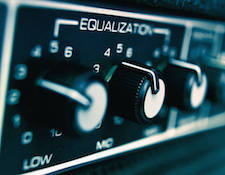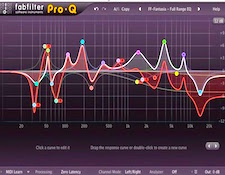It’s the time of year for saving money!
Ask any old-school hair-shirt audiophile about equalization and chances are they will tell you all the things that wrong with it. By adjusting the harmonic balance between treble, midrange, and bass you are altering the artist’s (or musician’s, engineer’s, or producer’s) original concept of how the music was supposed to sound. Also, by adjusting the equalization, be it via an analog parametric equalizer or a simple treble or bass knob, you are causing group delays and phase shifts at the crossover points that are more severe as you use more correction. For the last 30 years or so most serious high-performance preamps haven’t included tone controls as a matter of course.
 But wait! Isn’t the whole point of high fidelity to be able to hear the music clearly? If so, perhaps having some control of the harmonic balance that you are experiencing at your listening position isn’t as pernicious as the purists would have you believe. Well, there’s still that problem of introducing delays and phase anomalies. My Publisher, Jerry Del Colliano, sings the praises of the Cello Palette, which was simply a very well built and engineered multi-band analog equalizer. I’ve never had the pleasure. But I have used plenty of parametric equalizers over the years. So far I haven’t heard one that wasn’t IMHO overly audible even when not actively engaged.
But wait! Isn’t the whole point of high fidelity to be able to hear the music clearly? If so, perhaps having some control of the harmonic balance that you are experiencing at your listening position isn’t as pernicious as the purists would have you believe. Well, there’s still that problem of introducing delays and phase anomalies. My Publisher, Jerry Del Colliano, sings the praises of the Cello Palette, which was simply a very well built and engineered multi-band analog equalizer. I’ve never had the pleasure. But I have used plenty of parametric equalizers over the years. So far I haven’t heard one that wasn’t IMHO overly audible even when not actively engaged.
But there are alternatives to analog tone controls – digital tone controls. Many, and soon I expect most portable digital players have some form of digital EQ built in. And while many headphone listeners use these EQ settings to compensate for their headphone’s perceived sonic deficiencies, I find myself using digital EQ more to correct problems with recordings rather than with headphones, speakers, or rooms.
On my Mac most of the playback applications that I use have some form of built-in digital EQ. I use it maybe 5% of the time, usually on older, funkier recordings that are either lacking in frequency extension or overall fidelity. Good, better, and certainly best recordings don’t need EQ. The recording and mastering engineers did their jobs well so I don’t have to bust a gonad trying to “dial in” the sound. It’s already in the pocket, Jack.
 A nice byproduct of the computer audio revolution is now you can have a straight-wire-with-gain neutral analog system and still have the option of using EQ without messing with purity of the analog signal chain. Of course this sort of EQ won’t help on your LPs (unless you’re digitizing the signal right after the phono-preamp). But for me and the music I listen to having the option of EQ whenever I need the option of EQ is a beautiful thing.
A nice byproduct of the computer audio revolution is now you can have a straight-wire-with-gain neutral analog system and still have the option of using EQ without messing with purity of the analog signal chain. Of course this sort of EQ won’t help on your LPs (unless you’re digitizing the signal right after the phono-preamp). But for me and the music I listen to having the option of EQ whenever I need the option of EQ is a beautiful thing.





